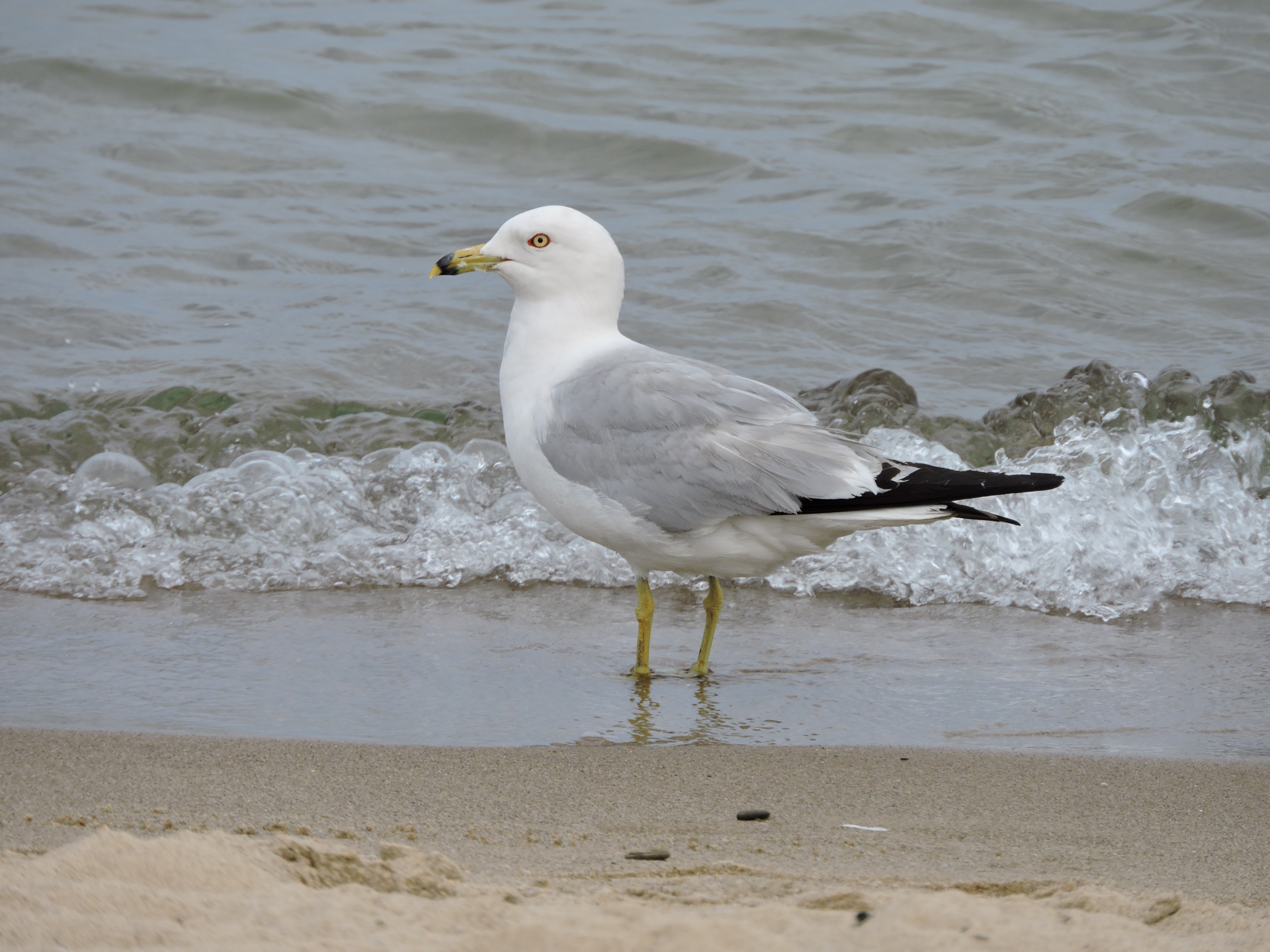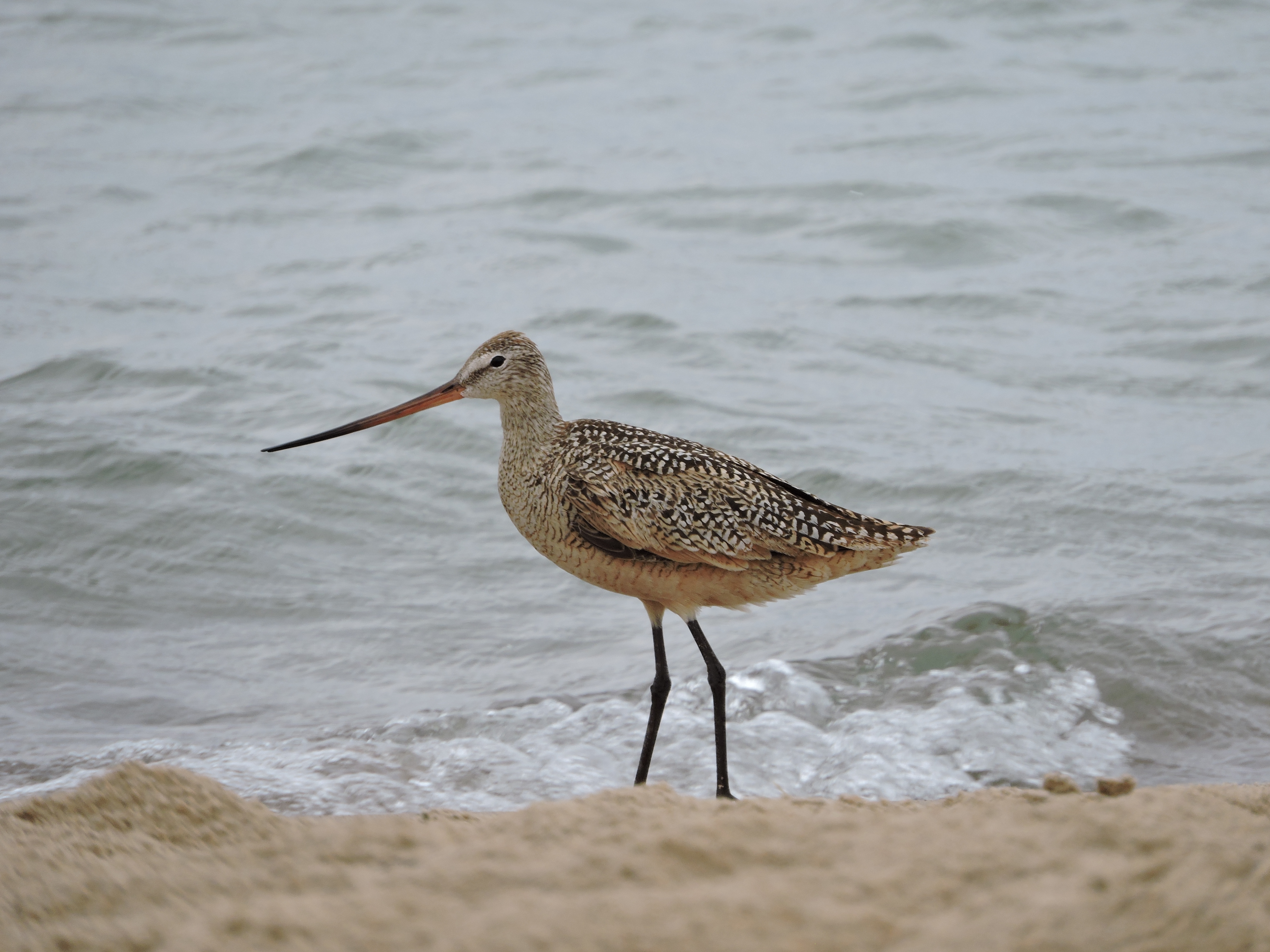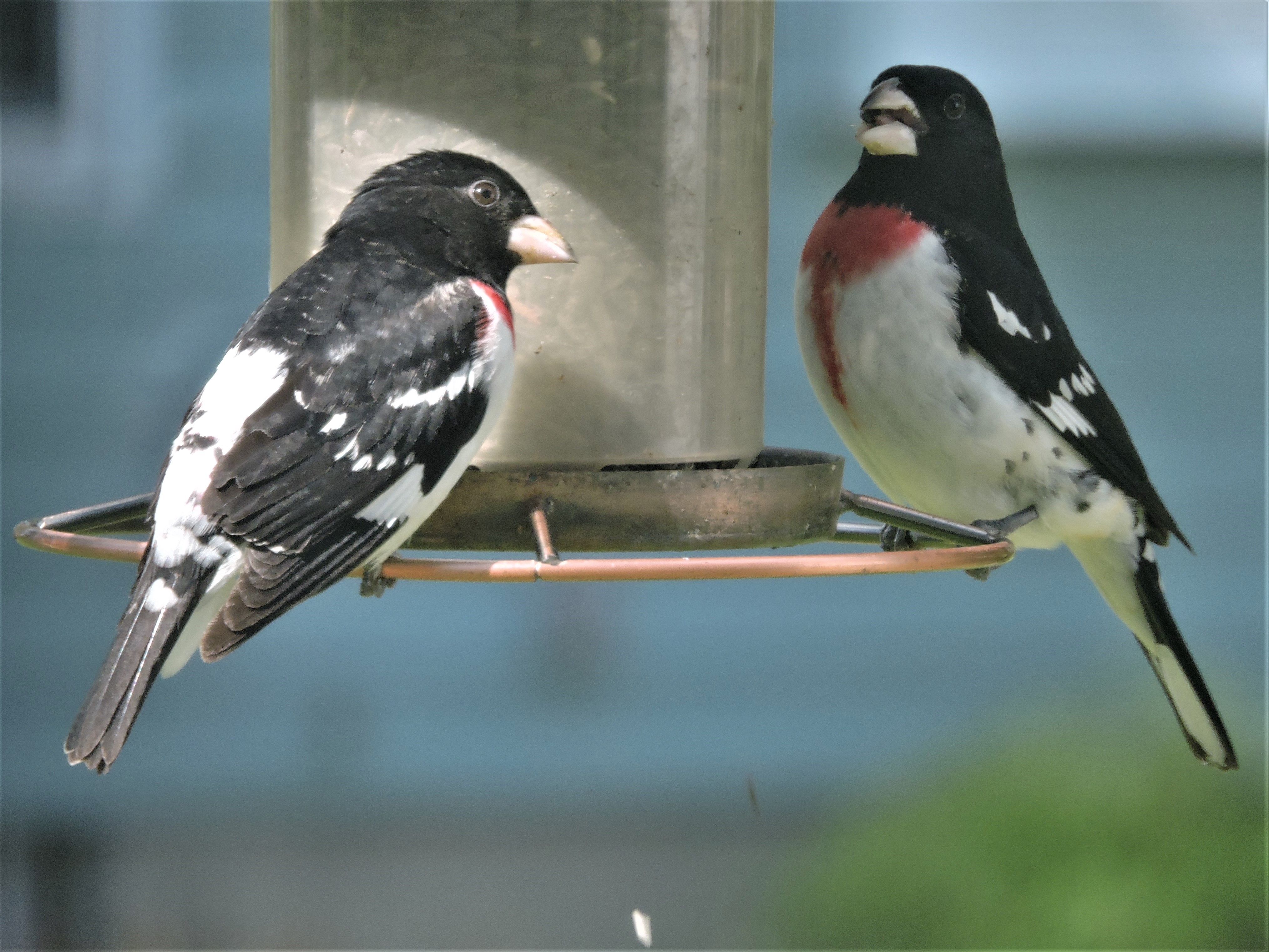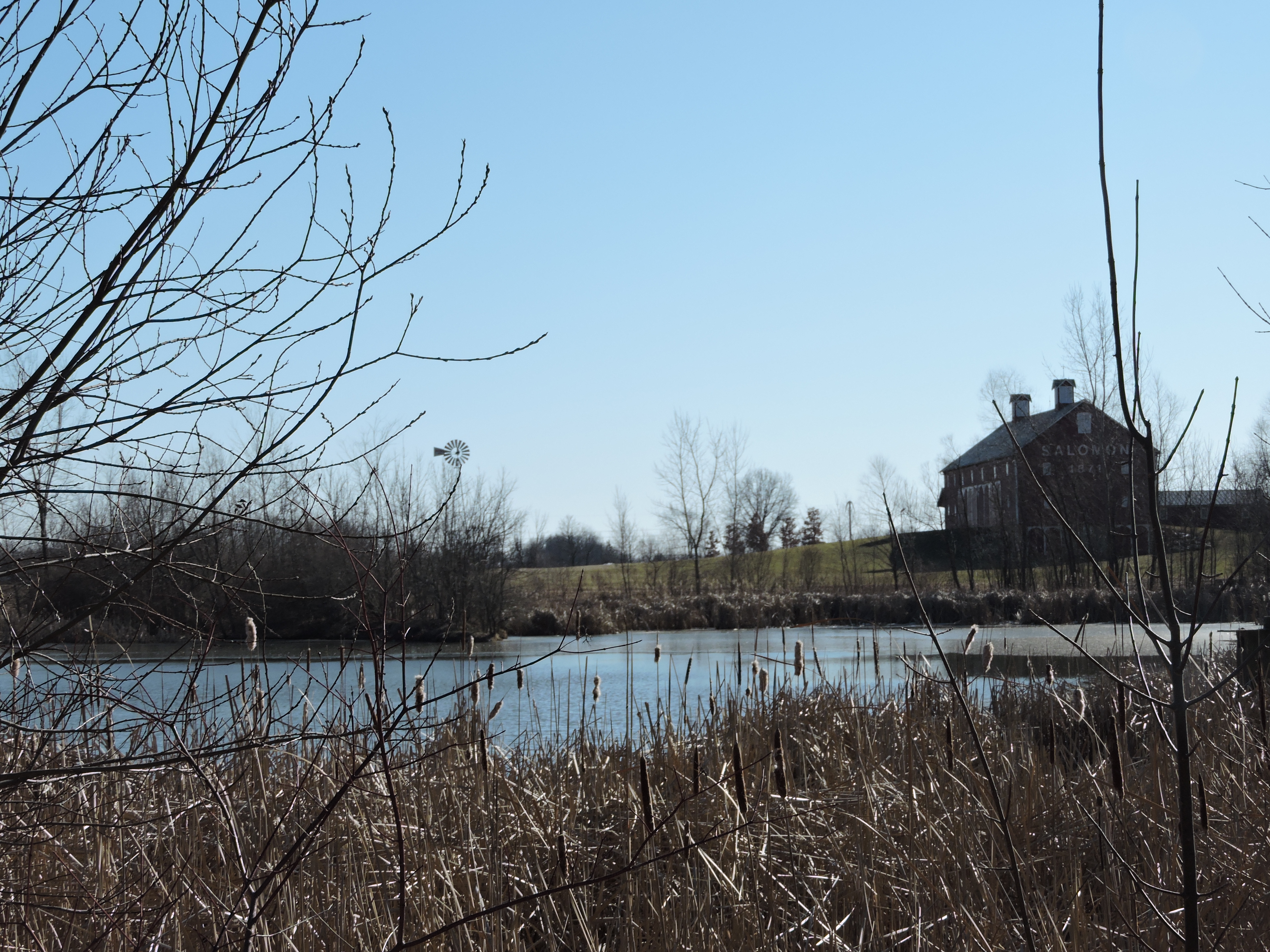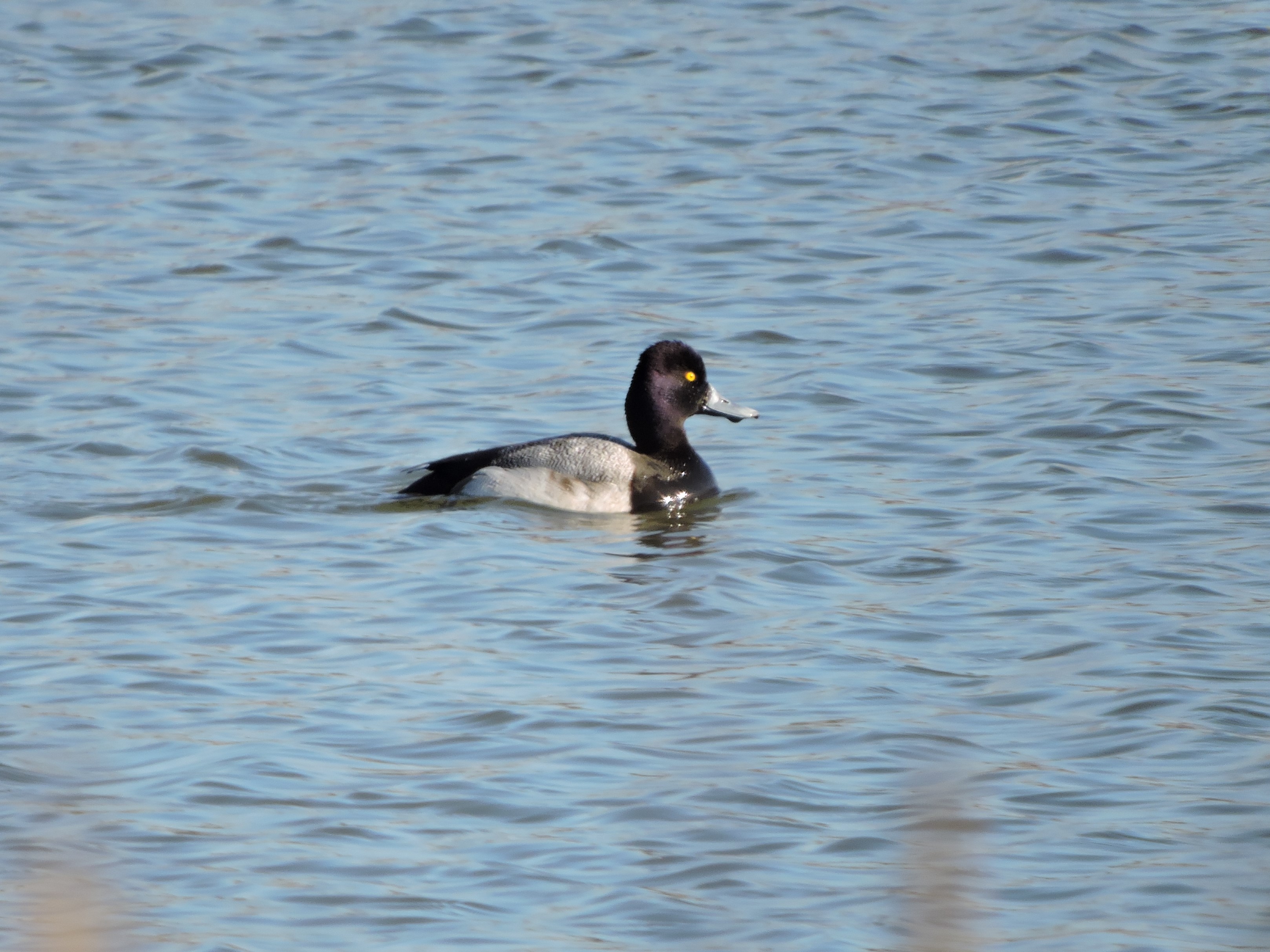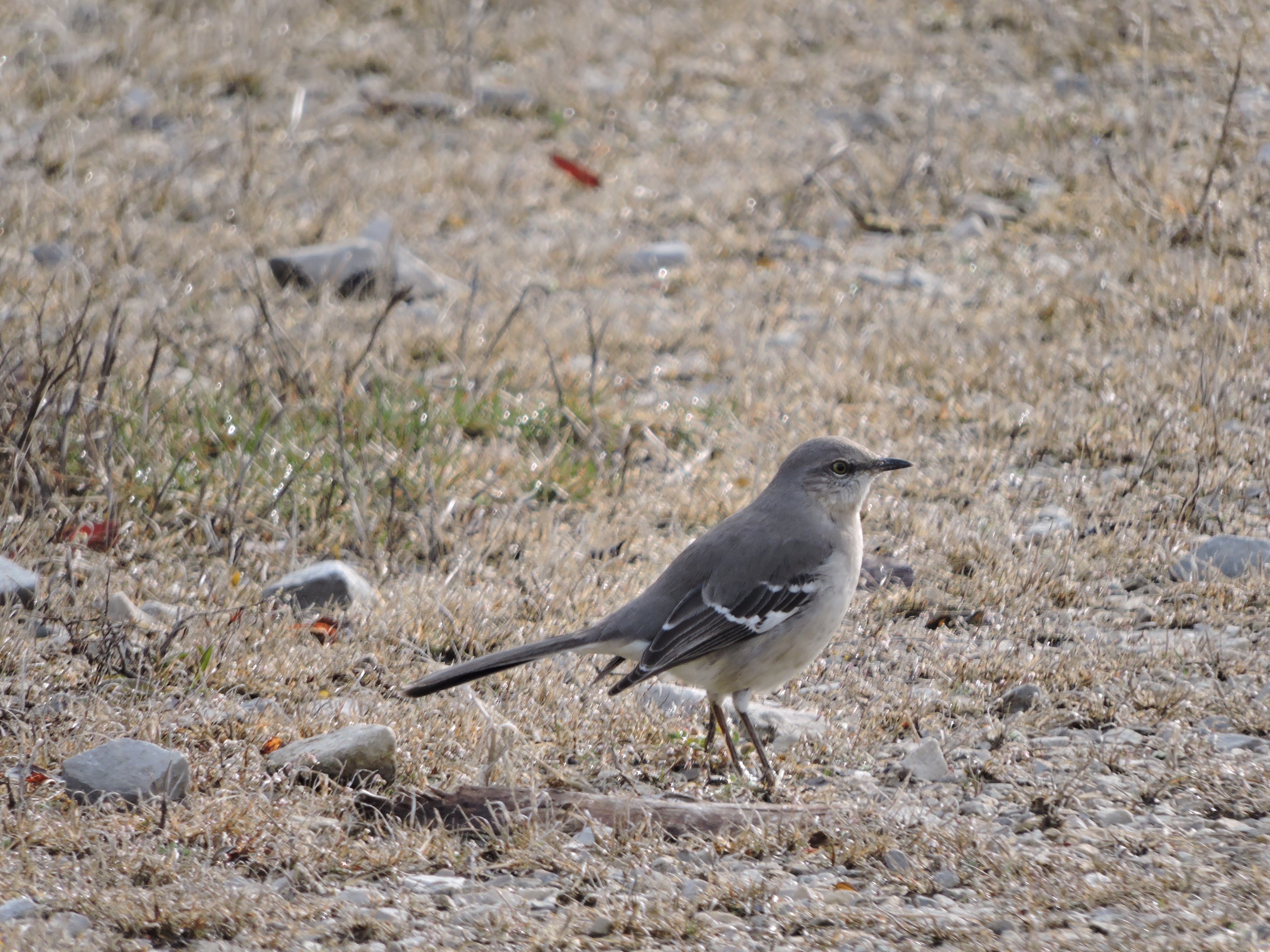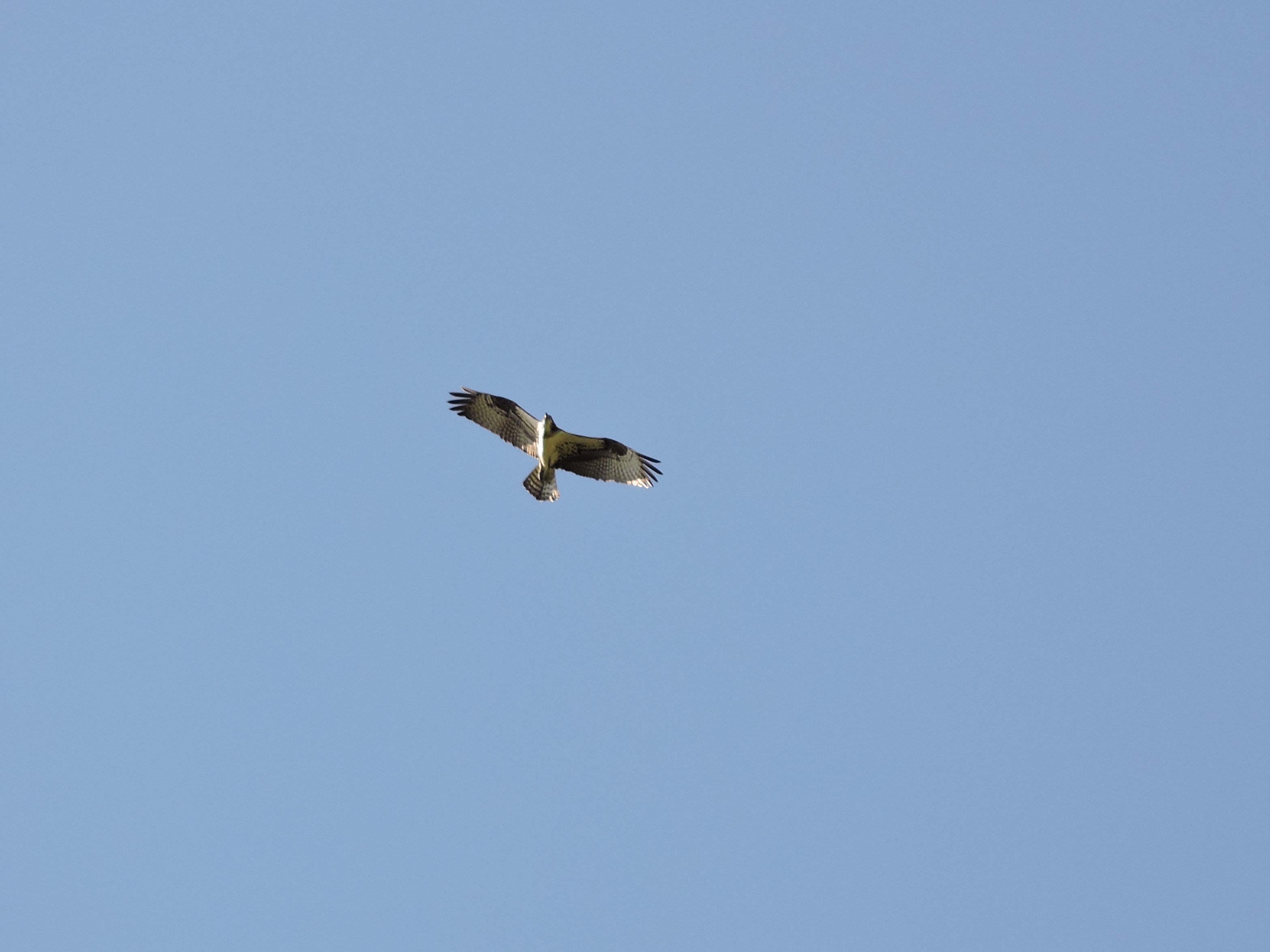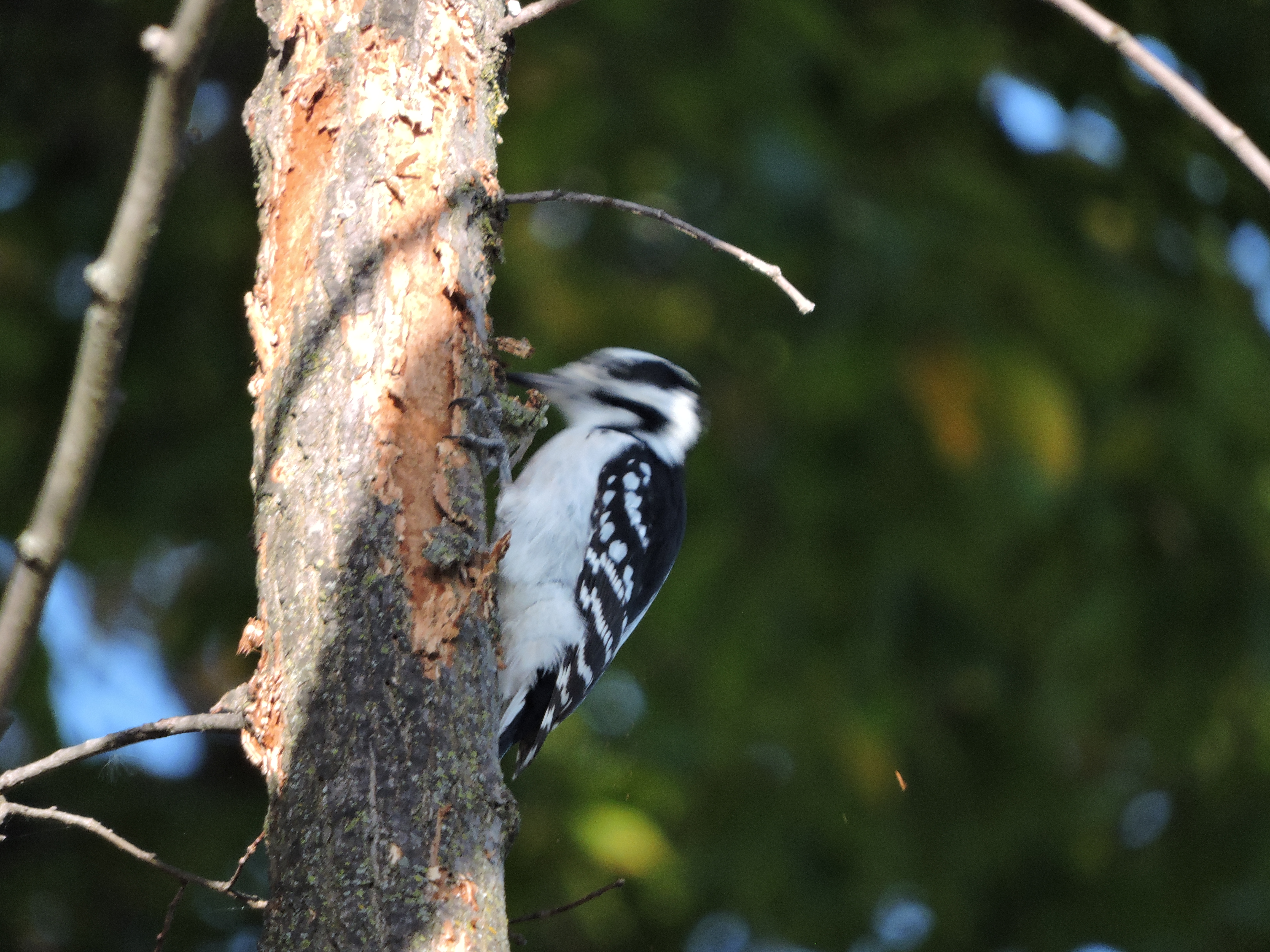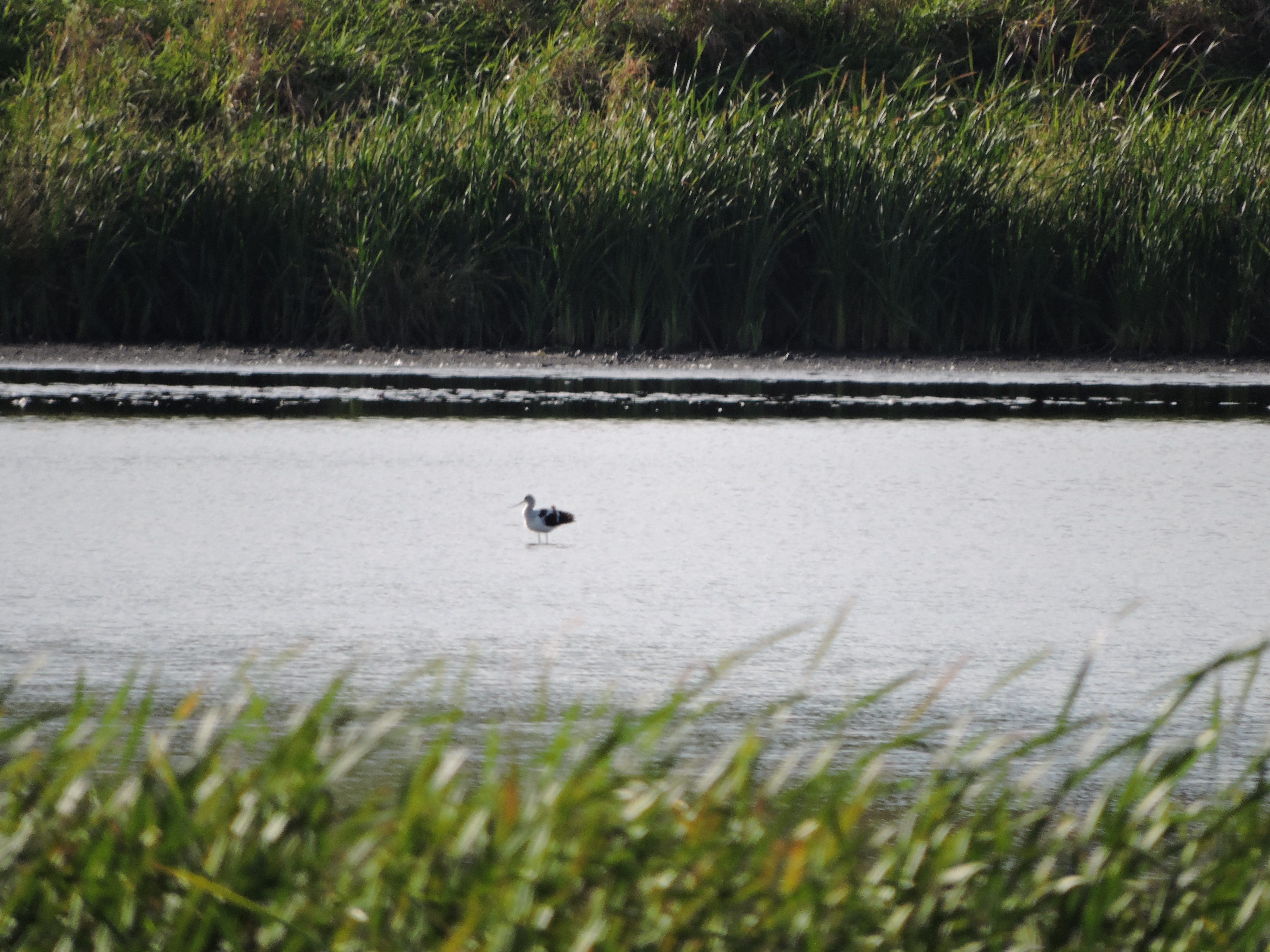I have done big green days in the past, but since green birding pairs so nicely with 5MRing, I decided this year that I would combine the two. I planned way less than I did in the past, woke up later, traveled less total distance, hit fewer spots, and had a great day because of it.
On a perfectly sunny Wednesday when all of my co-workers went down to watch Indy 500 time trials (not my bag), I set out at 7:00am to meet Lorenzo at Franke Park, much like we did last time with such a great outcome.

Northern Mockingbird
Right as I arrived, Lorenzo texted me to let me know that he was looking at a Northern Mockingbird. This bird achieves trash bird status in much of the east, but north of the Wabash River it is vanishingly uncommon. This was only the second one I have seen in Allen County (the first was two years ago, also on a big green day, but not in my 5MR), so it was a great way to start things off.

Orchard Oriole
This male Orchard Oriole was foraging nearby the mockingbird. This was again a bird I see very infrequently, making it just the second time I have seen one on my green list.
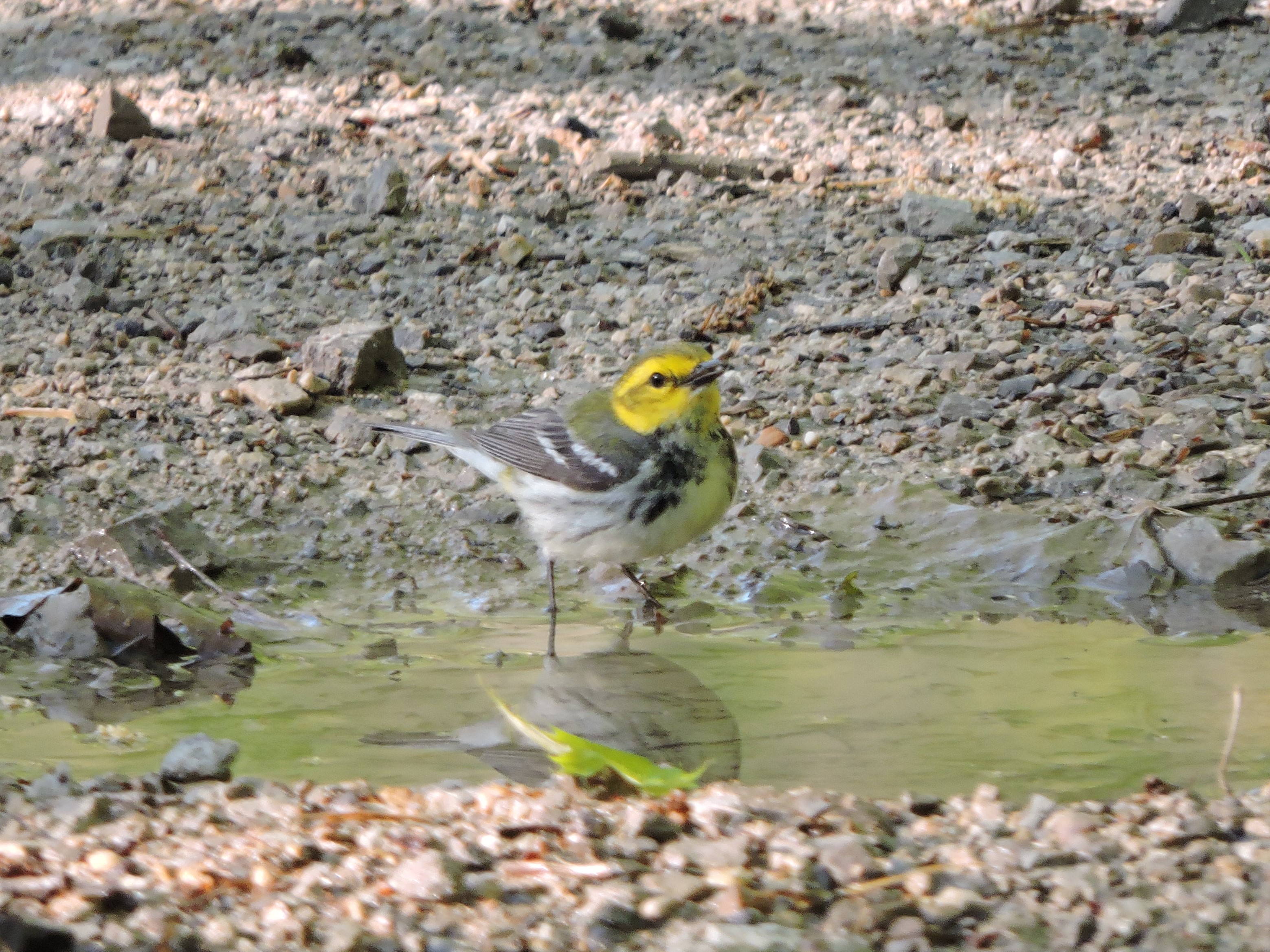
Black-throated Green Warbler
There is a gravel road that cuts through Franke Park, and it is usually one of the most popular places to bird because it creates a nice edge habitat. But that day the road itself was actually a pretty big hit with the birds. It had rained most of the preceding week so there were lots of puddles. This Black-throated Green Warbler used one pretty efficiently, flying down to drink not more than 20 feet in front of us.

Wood Thrush
Perhaps more interestingly, a Wood Thrush was also hanging out on the road. Usually a dense forest skulker, seeing one totally exposed like this was novel.

Wilson’s Warbler
In contrast, a Wilson’s Warbler worked the low shrubs in a way that was appropriate for its species.

Blackburnian Warbler
Meanwhile, a small flock of several Blackburnian Warblers stuck to the treetops. I should mention that every bird listed so far was crammed into a stretch of woods no longer than about 25 yards. The birdies were densely packed, and it was great.

Red-breasted Nuthatch
Eventually things settled down as the sun warmed things up, so we headed into the forest to try and keep things going. A Red-breasted Nuthatch was still partying despite the lateness of the season. Not late enough to make eBird mad, but I did have another one three days later that tripped the filter.

Golden-winged Warbler
So you have seen the photo above I assume, but I should stress that by far the most common bird was American Redstart. I had close to two dozen of them to the point where we assumed most of the small warbler-shaped birds we were seeing were Redstarts. I admit that I was getting lazy and really only stopping to look if something was in great light or singing a new song. So when Lorenzo peered at a tiny silent speck across the creek way high up in dense leaves and said “Oh hey, that’s a Golden-winged Warbler,” it was the highlight of the day to that point. It was a county bird for both of us, and while not rare, they are definitely not numerous, especially considering the population declines they are suffering and their fondness for mating with Blue-winged Warblers instead of their own kind. On top of it all I somehow also managed a diagnostic photo too.

Lindenwood Nature Preserve
I finally left Franke after three hours and a total of 64 species. My next stop was to the Lindenwood Nature Preserve, near the edge of my circle west of town. Somehow I had never birded this place before, but it immediately proved fruitful. I gained Veery, Ovenbird, and Ruby-throated Hummingbird as new birds for the day, and I listened to two dozen or more Tennessee Warblers all singing from the treetops around me. The chorus was unreal.
This preserve is completely forested save for a small lake in the middle, and everything was a total mud pit, but that seemed to be great for the birds. As I was finishing one of the loop trails and about to head to my next destination, the best bird of the stop called from somewhere far off in the trees: Pileated Woodpecker! That was a bird that was totally unexpected for my 5MR, and one I hadn’t even gotten onto my green list in the past two years. Hearing it was definitely one of the best highlights of the morning.
Around 11:30 I rode east into downtown, following the river but adding no new birds. My plan was to eat lunch at a plaza and wait for Peregrine Falcon and Rock Pigeon to fly by. I didn’t get either, but Chimney Swift was a bird that had thus far eluded me. When I started riding to my next destination, I suddenly had a huge problem with shifting and realized that I was totally unable to coast. Thankfully, one of Fort Wayne’s better bike shops has two locations downtown, and after visiting the first one to learn that my rear freewheel was totally shot (and picking up a flyover Peregrine), I made it a couple blocks to the second one where they had the necessary part. I was back on the trail less than half an hour after I first broke down. Thanks, Fort Wayne Outfitters!
Next, I traced the river greenway eastward to the southeastern boundary of my 5MR, stopping briefly to pick up easy birds in Turkey Vulture, Cliff Swallow, and Carolina Chickadee. I was approaching 80 species and had tapped out most of the potential for new birds in my mostly urbanized and riparian 5MR, so venturing out this way was strategic for getting my only shot at open country birds.

New Haven Fluddle
Waaay out on the edge of my circle, almost to the adjacent city of New Haven, was an area I had been wanting to check out because it held low-lying fields along the river. With the rain we had been getting, I thought it might be a good place to stop and look for shorebirds. My hunch was correct!

American Pipit with Least Sandpipers
Prior to that point, my only shorebird had been Killdeer. Franke Park is usually good for at least a Spotted Sandpiper if nothing else, but I struck out there earlier. However, this field held not only Spotted Sandpiper, but Lesser Yellowlegs and Least Sandpipers too. Those weren’t the best find, though. Foraging in the mud with them was a lone and very, very late American Pipit! I was stoked to see this bird, because it was even further off my 5MR radar than the Pileated Woodpecker was, and this was only my second time seeing one in Allen County. And on top of it all, it seems to be the latest ever spring record in eBird for my county.
This will be a field I continue to check out, and biking seems to be the best way to do it because the road is narrow with a steep drop-off on the shoulder. Pulling over in a car would be impractical, so score one for the bike.

Mourning Warbler
The other good thing about that field is that it is right across the river from the Deetz Nature Preserve, a property I had only birded once before but that yielded a good list. A nearby bridge made visiting this next stop pretty simple, and I made it there around 1:30 and with a day list of 79 species. Before the day began, I determined that 80 would be a respectable number, so I was eager to get my next new bird. It was getting hot and things were quiet in the early afternoon, so I wasn’t sure what it would be, although I still hadn’t come across some easy things like Belted Kingfisher or Field Sparrow. So it was an immense surprise when I flushed a Mourning Warbler out of the low brush to make that 80-species milestone, and this bird was a lifer to boot!

Common Yellowthroat
Instead of a peak, however, number 80 was just a sign of things to come. The brushy field on the western edge of the preserve gave me several new birds in rapid succession. I include this photo of a Common Yellowthroat not only because it was a new bird, but because while I was pressing the shutter a tremendous crashing noise just feet away from me made me jump up out of my skin. When I recovered I expected to look over and see a deer, but instead it was a Wild Turkey, yet another totally unexpected bird for the day! Then, to close out my visit, I ended with Field Sparrow to make it up to 83 species.

My 5MR and Big Day route
I got home around 4:00 to have dinner and get in some play time with the kids before heading out again for one final push around 7:00. I made the short trip to Purdue to look for Eastern Kingbird, which I got immediately, along with a bonus late Palm Warbler. Then I rode through Johnny Appleseed Park to finally get what would be my last new bird of the day in Belted Kingfisher.
After riding 40 miles as detailed by the red line on the map above, I ended the day at 89 species. This was quite a few more than I hoped for, and substantially better than the 77 I logged in a similar attempt two years ago where I traveled much further from home. Of my 89, I had 18 warblers, and of those warblers, one was my county Golden-winged, and one was my lifer Mourning. I logged a ton of species that I thought I had no chance at, chiefly Pileated Woodpecker, American Pipit, Wild Turkey, and one or two more sandpipers than I thought.
However, I did still have some obvious holes in the list. First and foremost was Rock Pigeon. I also was pretty thin on raptors and should have picked up Cooper’s Hawk, but it was not to be, and I also still haven’t had Common Nighthawk at all this year. If I had more time (or if I spent less time looking for migrants in the morning), I could have also maybe turned up some more grassland species like Horned Lark or Eastern Meadowlark. But in the end, I think the day was a huge success all things considered. With maybe a bit more planning and an amount of luck equal to what I had this year, I think 100 is totally possible for this particular 5MR. I’ll have to see what future outings hold! In any case, I ended the day with 130 total year-to-date species for my 5MR, and 128 for my green list.













































